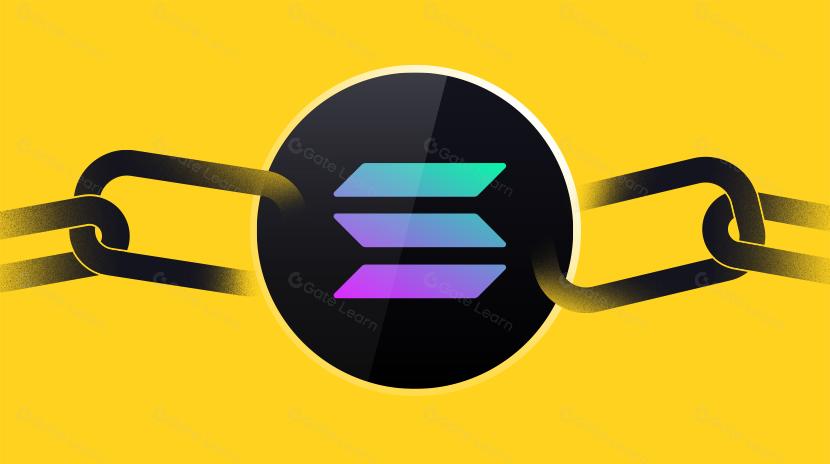How Cloud Gaming Under the DePIN Revolution Supports the Adoption of Crypto Games in Emerging Markets
Forward the Original Title‘IOSG Weekly Brief | How Cloud Gaming Under the DePIN Revolution Supports the Adoption of Crypto Games in Emerging Markets #265’
Congratulations to Shaga on securing a new round of funding, led by IOSG! We’re proud to support Shaga in leveraging DePIN to create unique value for the gaming industry.
1. Challenges and Opportunities in Cloud Gaming
Cloud gaming has always faced a major challenge in its rapid development: despite continuous technological advancements, the inherent flaws of centralized architectures still lead to significant latency. Data shows that traditional cloud gaming services add 40–150 milliseconds of latency compared to local gaming, an increase of 85%–800%.
For an optimal gaming experience, physical distance and network distribution are crucial—deploying gaming nodes close to end users can significantly reduce latency. However, building large-scale data centers everywhere is both inefficient and costly.
Industry Landscape
Google once attempted to solve this issue through its cloud gaming platform, Stadia. While Stadia’s failure is often attributed to marketing missteps and mismatched user demand, a commonly overlooked factor is that its technological promises were not fulfilled. The so-called “negative latency” claimed by Stadia was simply unachievable under its existing technical architecture. After all, latency is ultimately bound by the physical constraints of distance.
Similar issues exist elsewhere. Take Xbox Cloud, for example—it has 40 million users, yet still struggles with latency due to its reliance on centralized data centers, which are often underutilized and located far from users. While this solution may be “good enough” for casual and single-player games, it falls short for competitive and multiplayer games that demand the highest levels of immersion.
The Advantages of P2P Networks
The nature of cloud gaming makes it an ideal testing ground for distributed networks:
- Reducing physical distance and optimizing network distribution is key to lowering latency.
- Cloud gaming does not require massive hardware investments to deliver high-quality service.
This is precisely where P2P networks outperform centralized cloud services:
- P2P nodes can be located closer to end users.
- There is no need for costly large-scale data centers—consumer-grade hardware can deliver high-quality services and reach areas that traditional data centers cannot.
Adapting to Market Supply

According to Canalys, there are currently 2 billion gaming PCs worldwide, with 100 million new units added each year. However, while PC production continues to grow, the utilization rate of gaming devices for entertainment has not increased proportionally. At the same time, gaming demand is surging exponentially.
The contradiction between high-performance devices sitting idle and the skyrocketing demand for gaming creates an opportunity for P2P cloud gaming networks: by aggregating idle computing resources, these networks can provide low-cost, high-quality gaming access, especially for users in emerging markets who cannot afford high-end gaming equipment.

Therefore, we believe that edge computing and low-latency cloud gaming have the potential to become the mainstream method for game distribution, much like how streaming platforms revolutionized content distribution, making it more flexible and accessible.
2. Shaga’s Solution
Shaga is a DePIN product within the Solana ecosystem, specializing in ultra-low latency cloud gaming through edge computing.
Shaga enhances cloud gaming by leveraging edge computing, allowing any user to set up nodes and share gaming resources. Computing power providers can fully utilize gaming-optimized hardware, while players benefit from low-cost, high-performance, low-latency gaming experiences. With this model, PC owners can turn their devices into micro data centers at no cost and earn passive income. Additionally, joining the DePIN network does not require purchasing Shaga-specific hardware, significantly lowering the barrier to participation.
While Shaga supports both Web2 and Web3 games, it stands out for its innovative support for Web3 gaming. By integrating a built-in hardware wallet within its controller, Shaga enables seamless blockchain interactions without users even noticing.
Comparison with Web2 Competitors
Compared to Web2 cloud gaming giants like Nvidia and Xbox, which have larger user bases, these platforms still have major drawbacks:
- High latency
- Limited game selection
- Performance fluctuations based on users’ distance from data centers
Shaga, however, stands out with its unique advantages:
- Decentralized cloud gaming model
- Edge computing to minimize latency
- AI-enhanced gaming experiences

▲ Source: IOSG
Comparison with Web3 Competitors
Although many Web3 projects focus on gaming and decentralized computing, their technical approaches and market positioning differ significantly:
- Aethir specializes in enterprise-grade GPU computing services, primarily relying on data centers, making it closer to traditional Web2 solutions.
- iAgent focuses on AI agent training.
Deeplink also targets cloud gaming, but latency and security are not its core priorities, and it mainly relies on centralized computing power from miners and internet cafés.
In contrast, Shaga is dedicated to cloud gaming and builds its unique competitive edge through a distributed node network + social incentive system. This model delivers low-cost, low-latency, high-quality cloud gaming services while boosting player retention through social tasks and token rewards.

▲ Source: IOSG
3. Application Scenarios
Mobile Gaming Experience
Imagine this: you don’t have access to a gaming PC, or you’ve stepped away from your usual gaming setup—whether you’re at a café, library, or traveling—but you still want to jump into a high-quality gaming session. With Shaga, there’s no need to carry a high-performance laptop or rely on remote cloud servers. Simply open Shaga on any device (tablet, smartphone, or lightweight laptop), and you can “borrow” computing power from nearby nodes, enjoying a low-latency, high-fidelity gaming experience anytime, anywhere.
Local Multiplayer Gaming
Shaga is more than just a gaming platform—it’s also a social platform. With edge computing infrastructure, Shaga enhances not only single-player gaming experiences but also revolutionizes local multiplayer games like Super Smash Bros., FIFA, and Tekken. With FriendGrid, users can play together in real time even if they are not in the same room.
Gaming and Live Streaming Interactions
Game streaming is a massive industry, with 7 million active streamers and 35 million daily active viewers. Shaga introduces the “One-Click Co-Play” feature, allowing streamers to directly collaborate with selected viewers, adding a new interactive social dimension. By transforming passive viewing into active participation, Shaga creates a more immersive experience.
We believe this is just the tip of the iceberg—as Shaga’s applications continue to expand, it will introduce unique gaming experiences to the community.
User-Centric Experience
Shaga is built around the needs of end users—both node providers and gamers.
- Node providers can monetize idle computing resources, creating value for users while earning extra income.
- Players benefit from a premium cloud gaming experience with enhanced social and immersive gameplay through FriendGrid.
To ensure a seamless user experience, Shaga plans to introduce cloud-based game state saving, which periodically creates checkpoints. If a node fails, the game will instantly resume on another node using cloud save data. In the future, Shaga will implement a staking and reputation system, using game theory mechanics to incentivize high-quality node operators.
4. The Team
The Shaga team is dedicated to delivering an exceptional user experience, and we believe they will redefine gaming interactions—not just within Web3, but also across the Web2 ecosystem. Shaga goes beyond being “just another cloud gaming platform”; it has built a decentralized, user-driven network that fundamentally transforms the way games are distributed, experienced, and monetized.
Visit Shaga to explore the platform firsthand, or follow them on X (https://x.com/playonshaga) for the latest updates.
Once again, congratulations to Guido, Daeshawn, and the entire Shaga team! We are excited to witness this journey unfold and proud to be part of it.
Disclaimer:
- This article is reposted from [IOSG]. Forward the Original Title‘IOSG Weekly Brief | How Cloud Gaming Under the DePIN Revolution Supports the Adoption of Crypto Games in Emerging Markets #265’. All copyrights belong to the original author [Joey Shin @ IOSG]. If there are objections to this reprint, please contact the Gate Learn team, and they will handle it promptly.
- Disclaimer: The views and opinions expressed in this article represent only the author’s personal views and do not constitute any investment advice.
- The article’s translations into other languages are provided by the Gate Learn team and may not be copied, distributed, or plagiarized without explicit mention of Gate.io.
Related Articles

The Future of Cross-Chain Bridges: Full-Chain Interoperability Becomes Inevitable, Liquidity Bridges Will Decline

Solana Need L2s And Appchains?

Sui: How are users leveraging its speed, security, & scalability?

Navigating the Zero Knowledge Landscape

What Is Fundamental Analysis?
